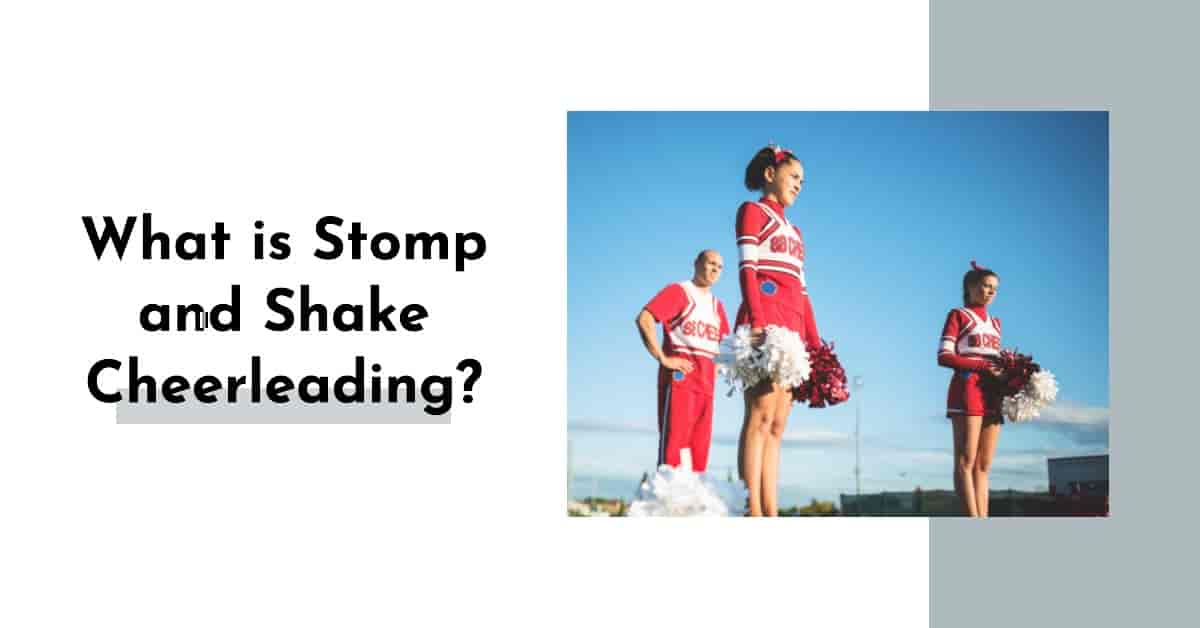Stomp and shake cheer incorporates high-energy footwork, dynamic arm choreography, and lively facial expressions. This distinctive performance style keeps crowds pumped up with its infectious energy. But what exactly constitutes this unique cheer genre and what’s involved in executing it seamlessly?
Defining Stomp and Shake Cheerleading
Stomp and shake cheer puts a dynamic spin on traditional crowd-rousing sideline routines. Cheerleaders rhythmically stomp, shake, kick, and punch to customized music mixes with robust vocals and driving instrumentals. Performers project palpable attitude through sassy arm shifts and head bobs punctuated by snaps. Facial expressions alternate from playful smiles to serious intensity, conveying the power and confidence that make stomp and shake so magnetic to watch.
While most cheer genres primarily focus on precision motions, visually-striking formations, and gymnastic skills, stomp and shake centers fully around selling powerhouse entertainment value from start to finish. The emphasis stays on footwork, gestures, and energy instead of extensive leaping or acrobatics. Stomp and shake began gaining traction in late 1990s cheerleading and continues upping the visual excitement ante every year thanks to its showstopping potential.
Mastering Stomp and Shake Cheer Methods
Successfully executing stomp and shake requires skills beyond typical sideline leading. The style functions as somewhat of a hybrid between standard cheerleading, dance team choreography, and drill team techniques. Athletes must master demanding combinations of kicks, claps, directional changes, level variations, and simultaneous motion-work unique to the genre.
Intense Footwork
The “stomp” component involves accentuated clomping noises from exaggerated heel plants, stomps, and foot slaps against performance surfaces. Interspersed jumping jacks, knee lifts, and platform hops add even more striking sound effects. Kicks travel front, side, and center-across in the same sequence together and incorporate height, speed, and snap for visual impact. Particular attention centers on impulse strength allowing turn sequences with multiple revolution leaps to seamlessly flow one after another. Such advanced skills let dancers seem spring-loaded, bouncing easily from one dynamic trick to the next.
Punchy Arm Motions
With few bases lifts involved, the focus turns towards exacting hand and arm placements. Angles remain sharp with hands firmly contoured, fingers straight, palms flattened. Arm levels seamlessly swing high and low, transitioning from extended stretches overhead to boxed punching beside hips without losing form. Hands shift from stomach to chest and outwards in synchronization requiring immense drill memorization. The timing aims to accentuate specific words, hits, kicks, and direction changes in the music. Fingers splay to point on accents then recoil back towards bodies, completing crisp and uniform transitions.
Facial Communication
Stomp and shake relies on exaggerated facial expressions and eye contact to communicate infectious spirit to audiences. Performers alternate between perky smiles and serious, almost aggressive, game faces in the same eight counts without losing the authentic entertainment factor. Exaggerated eye contact, head bobs, lip pops, and hip sways help sell musicality and confidence. Dancers stare out towards the crowds they aim to engage rather than gazing vacantly upwards at formations like some cheer styles. This creates an augmented connection and belonging between athlete and spectator that only magnifies the interactive excitement.
Types of Stomp and Shake Cheer
Traditional chants, jazz, hip hop, and pom dance hybrids comprise common stomp and shake cheerleading styles. Customized music mixes cater to each variety.
Chants incorporate classic spell-outs, crosses, and visual verbiage but put a sassy spin on traditional sideline execution. Stomp and shake chants feature stomp-driven visual punctuation of letters, kicks on crosses, and hip accents underlining crowd response portions. Examples include repeating a school’s initials in time with stomps or having fans echo consecutive words while cheerleaders reinforce through gestural imagery.
Jazz and hip hop variants allow the most freedom to groove and move to background music. Expect kick or turn sequences marrying with musical hits along with dramatic gestural choreography embodying attitude and rhythm. Poms waving overhead then placed provocatively on hips add striking visual contrast.
Warm Up Essentials
Before launching into full routines, athletes require thorough warmups activating muscle groups unique to stomp and shake’s rigorous athletic and technical demands. Focus particularly on:
- Stomp Drills: Front to back heel stomp isolations, grapevines traveling sideways, pivot turns
- Kick Drills: High kicks, fan kicks, flat backs emphasizing height and snap
- Arm Drills: Demonstrating precise angles, changes in arm height, using arms to sharply accent hits
Incorporating Stomp and Shake Successfully
Smartly layer stomp and shake sections amongst technical stunts and pyramids. Contrast a frenzied 32-count hip hop-centered dance break between crowd-pleasing basket toss sections. Use a face paced staggered spell-out chant building fan excitement to segue into a towering pyramid sequence. Such balanced programming keeps energy and engagement high from athletes and observers alike.
For those seeking to inject infectious vigor and unmatched crowd entertainment into their traditional cheerleading program, stomp and shake proves the perfect vehicle. The style represents a customizable hybrid of chants, jumps, dance, and kick precision specifically calibrated for modern pep rallies and competitive showcases alike. Proper warmup centered around footwork, arm angles, and stunt conditioning readies athletes to deliver flawless routines. In all cases, projection, enthusiasm, and showmanship reign supreme. Embrace characteristics that set stomp and shake cheerleading apart, and teams will have delighted fans feeding from their palms in no time.

